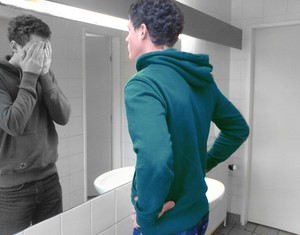Sufferers of body dymorphism disorder (BDD) have a mental health condition in which their negative preoccupation with a certain aspect of their appearance leads to a significant lessening in quality of life.
What is BDD?
People with BDD suffer a negative fixation about a perceived unattractive part of their body, usually a part of the face, although any part of the body can induce symptoms of BDD.
Some common areas of fixations include:
- The nose
- Wrinkles
- Thinning hair or baldness
- The eyes
- Acne or acne scars
- Hairiness
- Any part of the body being too big, too small or out of proportion
- General body shape
- Muscle or lack of muscle
BDD sufferers place great importance on their "ugly" feature, and believe that others judge them in a similar way. They are not easily convinced about their attractiveness, or about how unimportant or unnoticeable their defect is. They will often spend hours in front of a mirror, examining their defect or touch it constantly. Because of this preoccupation with appearance, BDD can be confused with narcissism or vanity, although in truth they are polar opposites. BDD patients do not look in the mirror thinking they look good.
BDD sufferers may try to hide their defect or may withdraw socially, as a means of hiding it. Many sufferers will try cosmetic surgery, often multiple times, as a way to remedy their problem - but are almost never satisfied with the results. The problem does not lie with the defect, but rather the mind, and as such altering the body cannot better the problem.
BDD, in extreme cases, can have a profoundly negative impact on quality of life and is very often associated with other mental health disorders, such as obsessive compulsive disorder, or depression. There is a high risk of suicide amongst BDD patients.
The true prevalence rate remains elusive, yet experts estimate that 1% of the population suffers with some degree of BDD. Most people will develop the disorder in their teens.
Symptoms of BDD
Most of us would change a certain feature or part of our appearance if we could, it's quite normal. BDD sufferers move beyond normal through a fixation on their perceived defect that has real implications for their quality of life.
Some symptoms of a BDD disorder include:
- Obsessing about their defect - spending hours a day thinking about or looking at it.
- Camouflaging – hiding their defect through clothing, growing a beard, body positioning or by other means.
- Social isolation – avoiding social interaction as a way of hiding their defect.
- Excessive grooming – spending long periods plucking hairs or combing.
- Spending a lot of time looking at pictures of models or stars, and comparing themselves to these people.
- Dieting or exercising compulsively, and excessively.
Normal concern about appearance only becomes BDD when that concern becomes a fixation, and that fixation starts to influence quality of life.
BDD Treatment Options
Many BDD sufferers will try plastic surgery or other bodily modifications, often multiple times, and many will suffer a co-occurring mental health disorder, in part caused by their BDD. Social phobias, compulsive disorders and depression are very common, and many BDD patients only ever get help when seeking care for their secondary problem.
Most commonly, cognitive behavioral therapies are used in the treatment of BDD. Cognitive behavioral therapy aims to help BDD patients change the way they think, and by extension, feel about their body. Using techniques such as exposure therapy, patients are encouraged to eliminate hiding behaviors in a safe and controlled environment – learning how to handle and diminish the anxiety that is associated with social viewing of their defect.
Psychiatric medications such as medications for obsessive compulsive disorder have also been shown to help in some cases.
BDD is real, traumatizing and dangerous, and it's also treatable. BDD patients should not suffer with their condition, and loved ones suspecting BDD in a friend or family member should encourage a professional diagnosis and treatment.
Page last updated Aug 13, 2010

